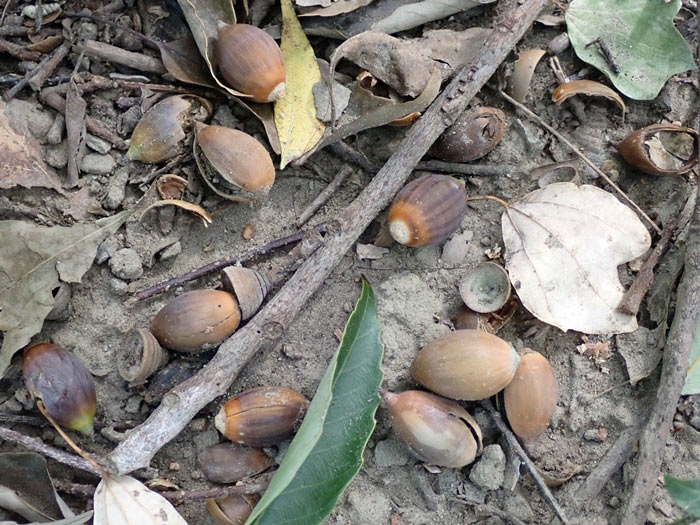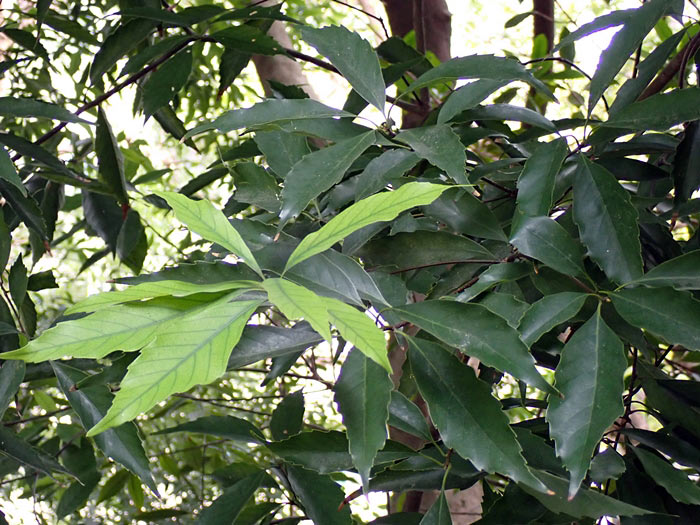Cyclobalanopsis glauca
The ring cupped oak is one of the most common native species of the beech family (Fagaceae) in Taiwan. It is a tall, evergreen tree with a straight trunk and dense, glossy foliage that provides generous shade. In autumn, its branches bear clusters of small, round acorns-an endearing sight in parks and green spaces across the island. Because of its resilience and adaptability, the ring cupped oak thrives in a wide range of environments, making it a familiar presence in both urban and natural landscapes.
The popularity of this species lies not only in its graceful form and value as a shade and landscape tree, but also in its charming acorns, which add seasonal appeal. When mature, the acorns fall from the tree, attracting squirrels, birds, and other small animals to feed on them. These interactions enrich the ecological diversity of city parks and create lively scenes of nature within urban spaces.
Compared with other members of the Fagaceae family, the acorns of the ring cupped oak have relatively soft shells. Once ripe, the shells often split open naturally, exposing the plump seeds inside. This feature allows seedlings to germinate easily around the parent tree, reflecting the species’ strong regenerative capacity and remarkable vitality.
The ring cupped oak is widely distributed across East Asia, including Taiwan, Japan, South Korea, mainland China, and neighboring regions. In Taiwan, it can be found from lowlands to mid-elevation mountains, particularly on sunny slopes and in areas with poor or limestone-rich soils. Its hardiness, ease of cultivation, elegant tree shape, and ecological benefits make it a favored choice for use in parks, roadside plantings, and green spaces.
At the National Museum of Natural Science, ring cupped oaks are primarily cultivated in the Northern Lowland Area and Central Lowland Area of the Botanical Garden. Mature acorns begin to drop around November each year and continue through January, providing food for wildlife and an excellent opportunity for visitors to observe the seasonal changes of Taiwan’s native trees.

